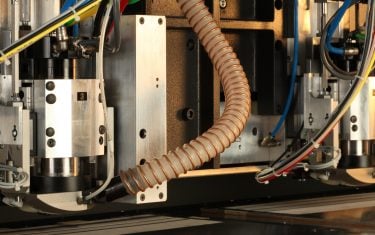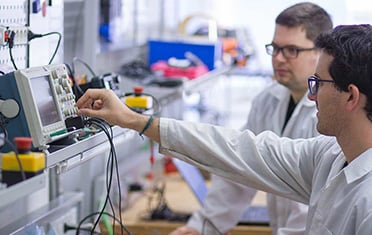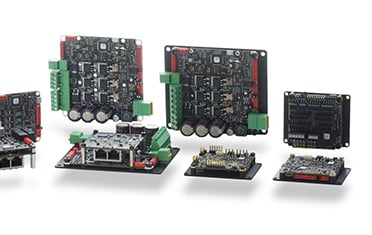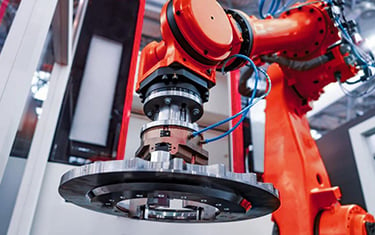Housed versus Unhoused Encoders
Celera Motion offers two types of absolute inductive encoders (IncOders) in terms of housing design – housed and unhoused IncOder....
Read Paper >Power Budgeting and Motor Sizing for Battery Applications
This paper will provide the equations needed to calculate input power, output power, motor power losses, and efficiency for properly...
Read Paper >Air Bearing Spindle Installation & Operation
Celera Motion’s Westwind air bearing spindle technology is adopted in many specialized machine tools, robotic automation, and semiconductor processing applications,...
Read Paper >Motor Unit Conversions – What They Mean and How They are Used
In the world of motion control, units can vary significantly depending on drive type. The type of drive being used...
Read Paper >What Motor Torque Constant to Use for Drive Type – Theory and Application
The motor theory described in this paper is based on a brushless motor (BLAC or permanent magnet synchronous machines) configuration...
Read Paper >EtherCAT operating modes
This paper discusses the modes of operation of an EtherCAT based control system. Selecting the right mode of operation is...
Read Paper >Incremental Optical Encoder Technologies
Optical encoders can be incremental or absolute but the focus here is incremental. There are three primary implementations: transmissive, reflective...
Read Paper >Why Motor Constant Matters in Thermally Limited Applications
Temperature is one of the many limiting factors in the motor selection process that can be easily overlooked. This paper...
Read Paper >Comparison of Slotless and Slotted Motors
Permanent magnet brushless motors come in all shapes and sizes providing both rotary and linear motion. They are known for...
Read Paper >Efficiency and Power in Servo Drives
This paper explains the origins of power losses in a servo drive. The concepts of switching, conduction and quiescent losses...
Read Paper >Position Sensors – Choosing the right sensor
Position sensors are used in a wide range of automation and measurement applications. A key step in selecting a suitable...
Read Paper >Sizing a Shunt Resistor for Regenerative Braking
This paper discusses how to specify the shunt resistor used when a servo drive is in regenerative braking mode. The...
Read Paper >Clarifying Current Values and Naming for Celera Motion’s Ingenia Servo Drives
This paper discusses how the output current of servo drives is specified. Standard industry terminology is explained. The paper concludes...
Read Paper >Accuracy, Resolution and Repeatability
There are several key terms that are critical to specifying the optimal position sensor for a given application. This application...
Read Paper >What are Air Bearings?
What is an air bearing, how does it work, and where should it be used?
Read Paper >A Method of Virtual Torque Sensing for Collaborative Robot Joints
This technical document explores the use of calibrated motor current and internal compliance in harmonic gearing to produce a virtual...
Read Paper >Motor Sizing 101
This technical note addresses basic motor sizing with simple calculations that can be done to generally size any motor application.
Read Paper >Incremental Encoders vs Absolute Encoders
Position sensors are available as absolute or incremental devices. This paper discusses the key differences of the two technologies (Absolute...
Read Paper >How Inductive Sensors Work
This article explains the technology of the inductive encoder. This device is closely based on the resolver. It is instructive...
Read Paper >Torque measurement with angle sensors
This technical document explores the use of calibrated motor current and internal compliance in harmonic gearing to produce a virtual...
Read Paper >





























